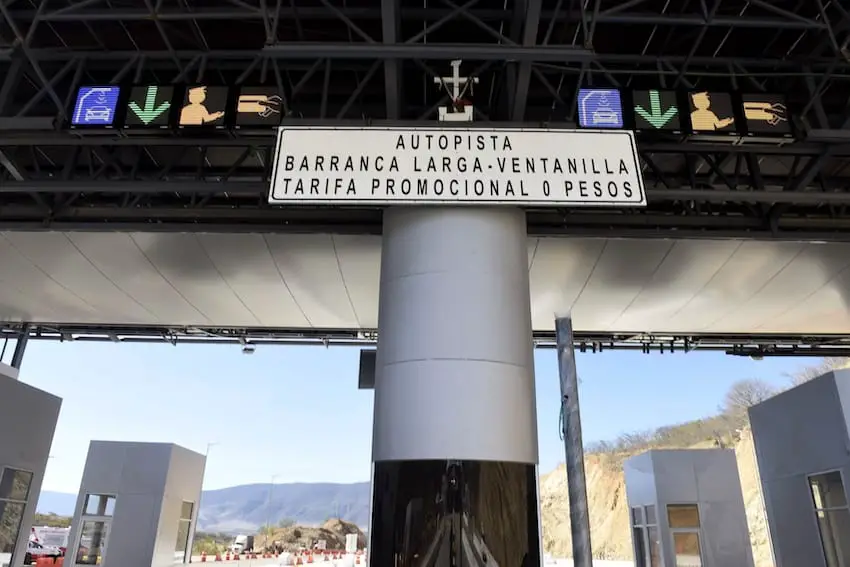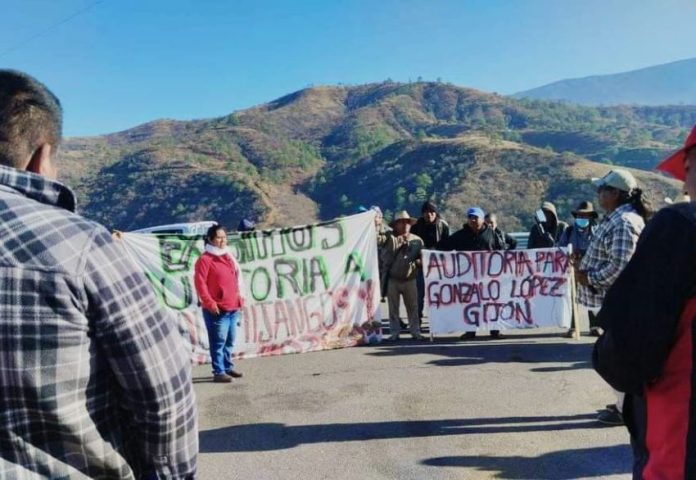After 15 years of stops and starts, Oaxaca’s new highway from the interior to the coast was finally opened to the public on Sunday.
Less than 24 hours after its inauguration, however, the 104-kilometer highway between Oaxaca city and Puerto Escondido was blocked on Monday by residents of the Los Coatlanes area in the Sierra Sur.

Saying they will not allow the new roadway to be operated by the same businesspeople as always, the protesters set up near San Pablo Coatlán for nearly eight hours starting at 4 a.m., allowing passage to private vehicles only.
The new highway spans from Oaxaca City to Puerto Escondido, reducing travel time from 6 1/2 hours to 2 1/2 hours, according to Mexico’s transportation ministry. Google Maps estimates the journey at 3 1/2 hours.
The Barranca Larga–Ventanilla highway passes through 15 communities in the San Pablo Coatlán area, but there are no off-ramps or exits to provide access to locals.
The protesters said the highway crosses their lands, and that there’s an agreement in place saying that the highway can only be used by the public rather than by trucks, buses and other commercial vehicles.
#AlMomento | Comuneros de los Coatlán activan retén en la autopista #Oaxaca – Puerto Escondido En el tramo Barranca Larga – Ventanilla, impiden tránsito de urban de otras líneas pasajeras; solo permiten paso a vehículos particulares. pic.twitter.com/W0bu683yzk
— El Imparcial de Oaxaca (@ImparcialOaxaca) February 5, 2024
They told government officials they don’t want to make a profit off the new highway, but they want services to improve their communities.
They said now that the highway is open, businessmen want to “dig in their heels” and make money for their own benefit.
They demanded an audit of their municipal president, Gonzalo López Gijón, saying he had been a municipal administrator the last three years, and called for safeguards against having their lands turn into traffic nightmares when cultural events and festivals are held.
José de Jesús Romero López, a Oaxaca state government official, said in a statement that public transportation permits are granted by the Ministry of Infrastructure, Communications and Transportation (SICT), not protesters. Romero added that the SICT and Interior Ministry (Segob) have asked the parties to come to the bargaining table.
Sunday’s inauguration was attended by President Andrés Manuel López Obrador, Oaxaca Governor Salomón Jara Cruz and many other government officials.
President López Obrador said that for the last eight months of his administration, no toll will be charged for local users. “There is a proposal that in September only visitors and cargo transportation will be charged, but not Oaxacans,” he said.
Transport minister Jorge Nuño Lara called the highway a long-awaited dream come true.
According to a press release, the López Obrador administration invested more than 10.6 billion pesos (US $625 million) in the project, after restarting construction in 2020 after the work was abandoned during previous administrations. The total investment was more than 13 billion pesos (US $763 million), the release added.
The inauguration came 15 years after work on the highway first began in the Felipe Calderón presidency. Initially, a ribbon-cutting ceremony had been planned for 2012.
The release also noted that the opening of the highway will increase tourism and job opportunities and “boost the economic growth and social development of [Oaxaca] like never before.” An estimated 4,250 vehicles will use the highway daily, the release noted.
With reports from La Jornada, Quadratin, Obras and Crónica
